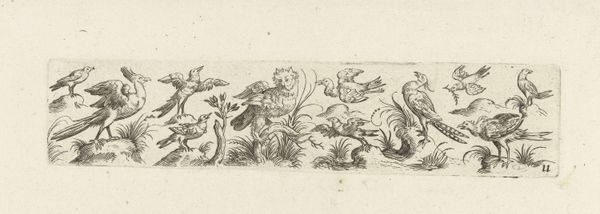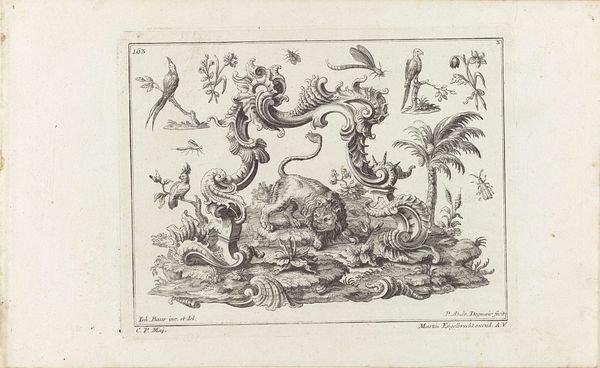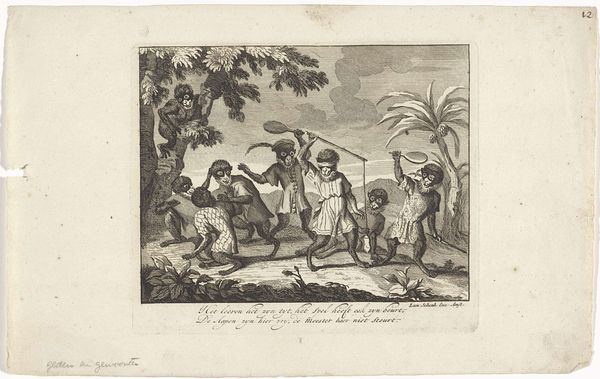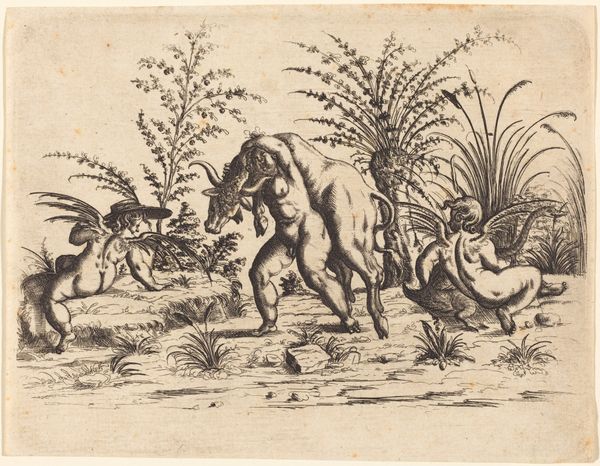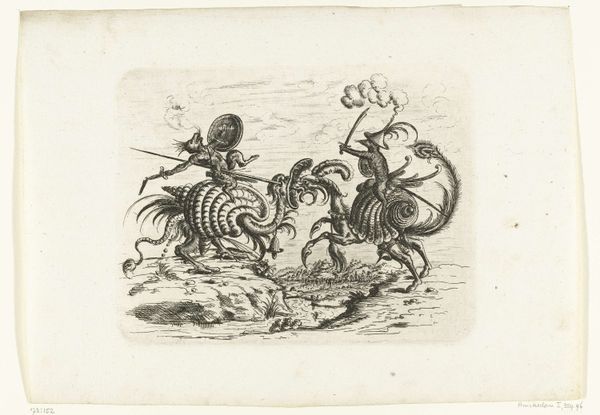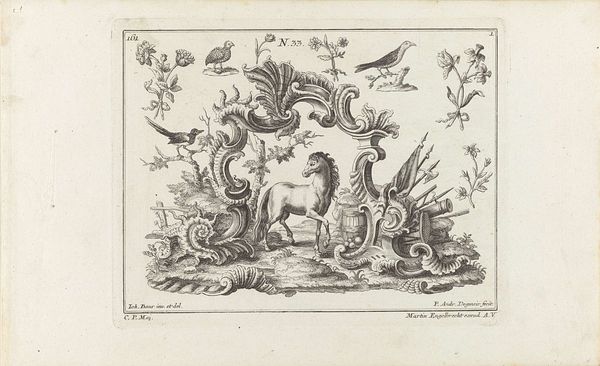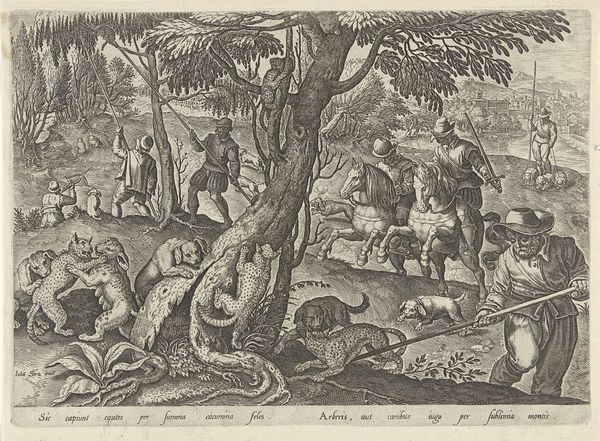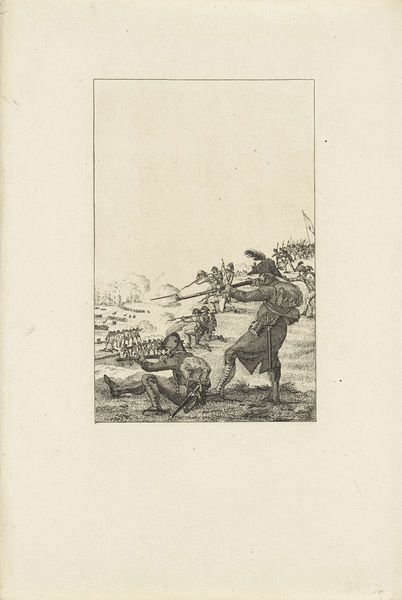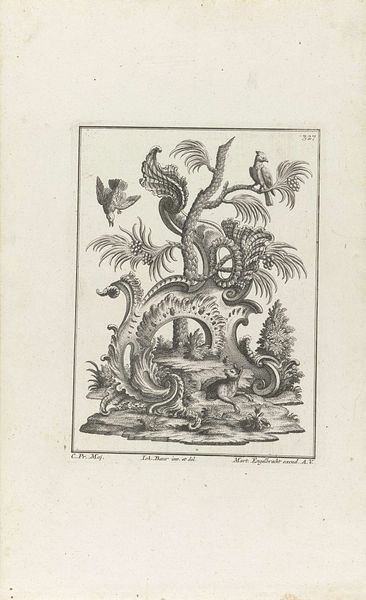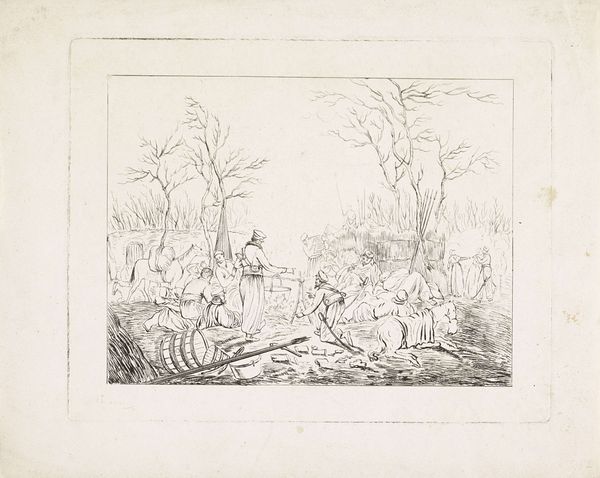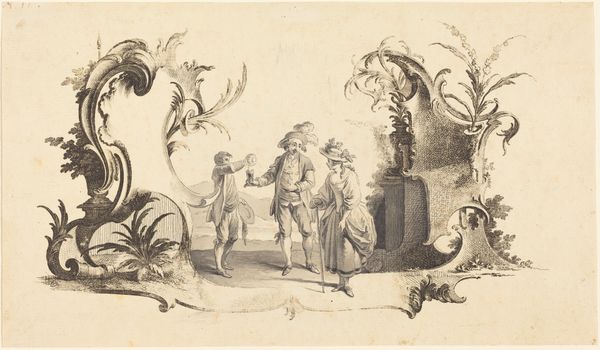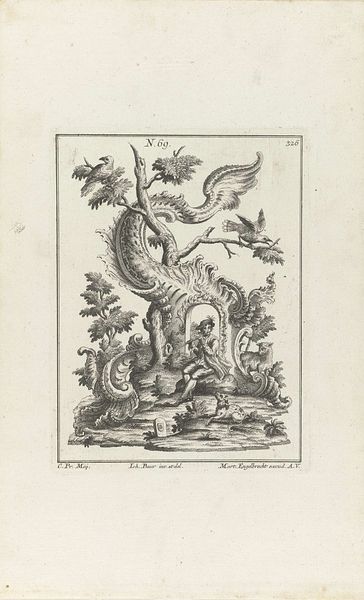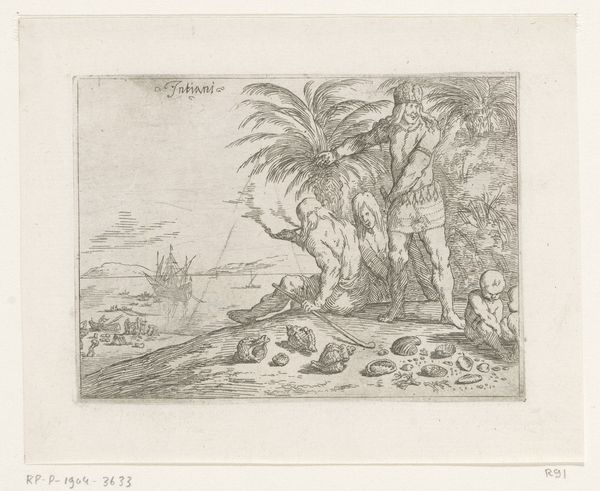
print, engraving
# print
#
mannerism
#
figuration
#
engraving
Dimensions: height 143 mm, width 184 mm
Copyright: Rijks Museum: Open Domain
Christoph Jamnitzer made this print of three putti, or cherubic children, sometime around the turn of the 17th century. It’s an etching, meaning that the image was first drawn into a wax ground on a metal plate, then bitten with acid, and finally printed. Look closely, and you’ll see the characteristic lines that build up the figures and foliage. The etching process was absolutely essential to the rapid dissemination of designs at this time. Jamnitzer was part of a family of goldsmiths in Nuremberg, and this print was likely made to be used as inspiration by other artisans. The composition is elaborate and fantastical, full of swirling forms, and classical references. The image’s primary purpose was to provide visual ideas for other artworks in metal. What’s interesting is the translation of form from 2D to 3D: How might these cherubs and plant forms come alive when rendered in precious metals? This print serves as a reminder that we can appreciate the craft and artistry of even the most seemingly utilitarian objects.
Comments
No comments
Be the first to comment and join the conversation on the ultimate creative platform.
